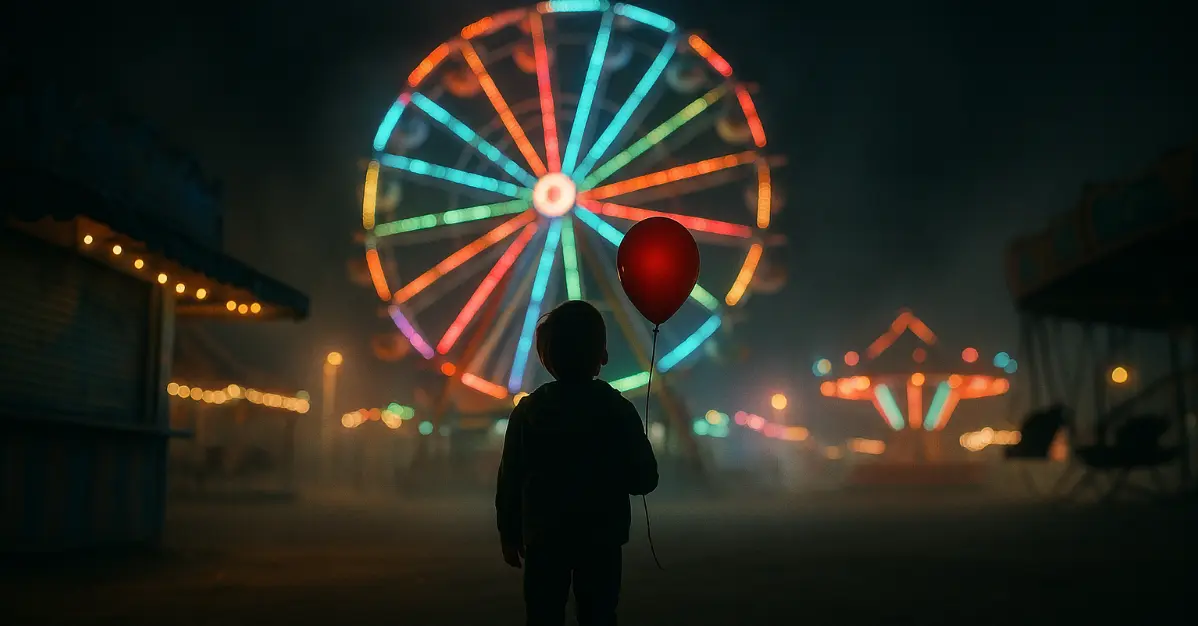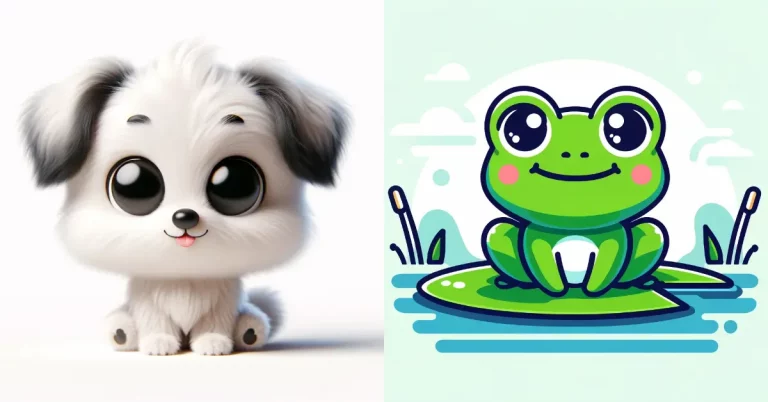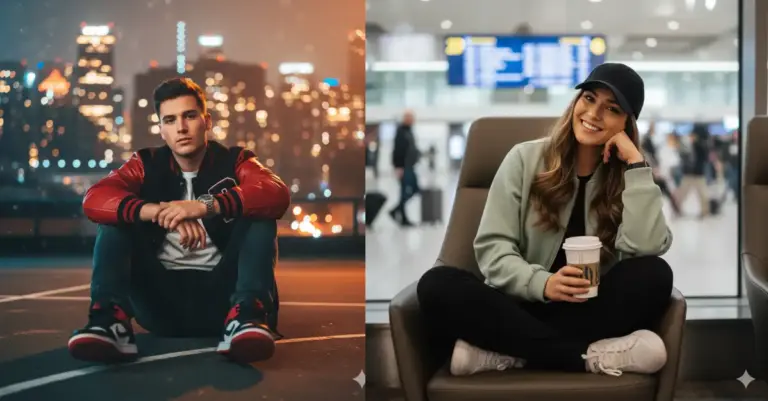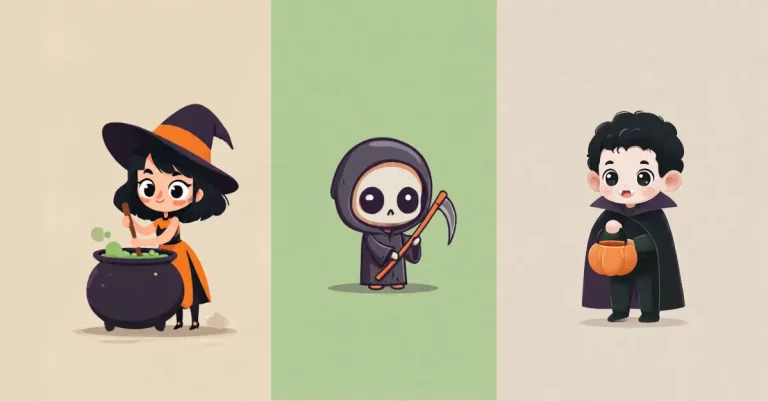20 ChatGPT Prompts for Stunning Cinematic Photos
Taking cinematic photos is about creating images with a story. These aren’t just regular pictures—they have mood, lighting, composition, and a feeling that pulls you in. With AI tools like ChatGPT, you can now describe exactly what you want and get impressive results.
How to Create Cinematic Photos with ChatGPT
ChatGPT can generate amazing cinematic images if you know how to ask. Free users can visit chatgpt.com and use the ChatGPT-4o model to create images directly in the chat. If you have ChatGPT Plus, you might want to try Sora for even more control over your results.
How to Write Effective Prompts
Good prompts need specific details. When writing yours, include:
- Scene description – What’s happening and where
- Mood and atmosphere – The feeling you want to convey
- Lighting details – Type, direction, and quality of light
- Color palette – Main colors and their relationships
- Composition – Camera angle, framing, and focus
- Details – Small elements that add authenticity
20 Cinematic Photo Prompts You Can Use Right Now
Here are 20 prompts I’ve tested that produce amazing cinematic results:
1. The Alien Discovery
Capture a cinematic scene inside a derelict starship bridge. A lone astronaut in a slightly damaged suit discovers a faintly glowing, alien artifact on the command console. The lighting is sparse and dramatic, primarily from emergency red alert lights casting long shadows, and the soft, eerie blue glow of the artifact. The color palette is dominated by cool blues, deep reds, and metallic grays. Use a medium shot composition, slightly low angle, focusing on the astronaut’s helmet reflecting the artifact. A shallow depth of field blurs the decaying background consoles, emphasizing the isolation and mystery. Add floating dust particles illuminated in the light beams.
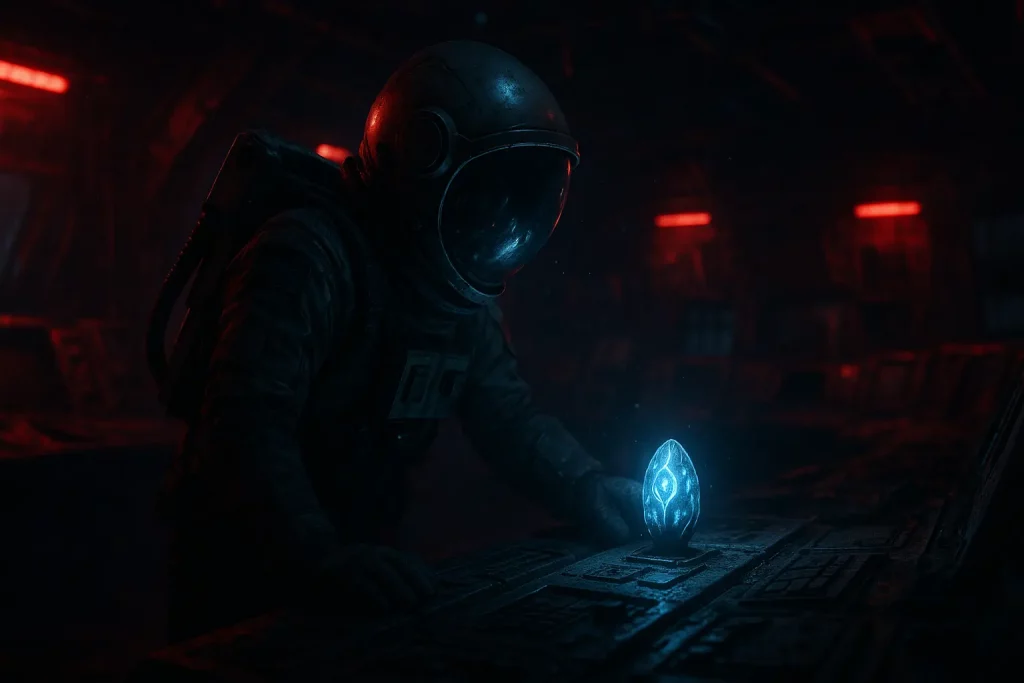
2. Urban Sunset Contemplation
Create a cinematic shot of two figures silhouetted against a dramatic sunset, sitting on the ledge of a gritty urban rooftop overlooking a sprawling cityscape. The mood is contemplative and intimate, with a touch of hopeful melancholy. The lighting is dominated by the fiery oranges, pinks, and purples of the setting sun, backlighting the subjects and casting long shadows across the tarred roof. The color palette is warm and vibrant in the sky, contrasted by the cooler, muted tones of the city below. Use a wide-angle composition to capture the scale of the city. Focus is deep, keeping both the figures and the cityscape relatively sharp. Include details like distant traffic lights, water towers, and faint city haze.
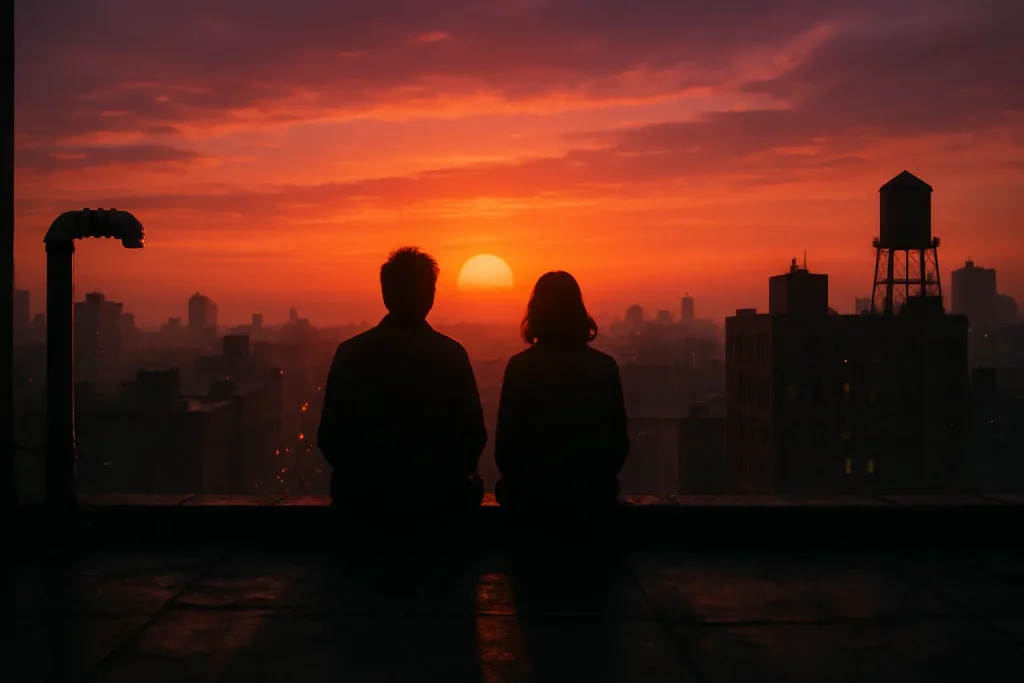
3. Desert Wanderer
Capture a cinematic frame of a lone wanderer, clad in weathered robes, trudging across vast, undulating sand dunes under a scorching midday sun. The mood is one of endurance, isolation, and immense scale. The lighting is harsh and bright, creating sharp, dark shadows and highlighting the texture of the sand. The color palette consists primarily of yellows, oranges, and browns, with a brilliant, almost white sky. Use an extremely wide, low-angle shot to emphasize the vastness of the desert and the smallness of the figure. Add details like heat haze shimmering above the sand and wind-blown ripples on the dunes.

4. Film Noir Detective
Generate a cinematic scene inside a dimly lit, smoke-filled detective’s office in the 1940s. The detective sits behind a cluttered desk, face partially obscured by shadow, illuminated by the sharp angle of light from a desk lamp. The mood is tense, weary, and filled with unspoken secrets. Lighting is classic noir chiaroscuro: harsh key light, deep shadows, light filtering through Venetian blinds casting striped patterns on the wall. The color palette is mostly monochromatic with desaturated tones, perhaps a hint of sickly green from the lamp or warm amber from a glass of whiskey. Use a medium close-up composition, slightly off-center. Shallow depth of field focuses on the detective’s expression (or lack thereof). Include details like overflowing ashtrays, scattered files, and reflections on the rain-streaked window.
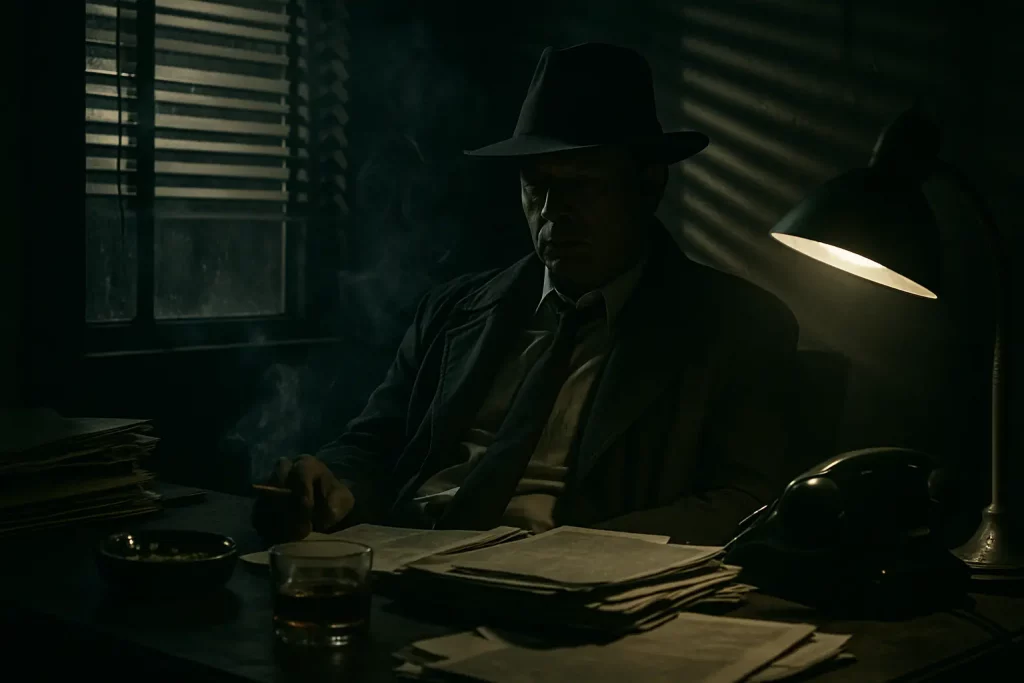
5. Haunted Library
Capture a cinematic moment in a vast, dusty, and seemingly abandoned Victorian library at night. A single beam of moonlight illuminates a floating, spectral book hovering mid-air in a deserted aisle. The mood is eerie, suspenseful, and gothic. The lighting is primarily cool moonlight streaming through a tall arched window, contrasting with deep, impenetrable shadows in the corners and between towering bookshelves. The color palette is dominated by cool blues, silvers, and deep browns/blacks. Use a low-angle composition looking up towards the floating book, emphasizing the height of the shelves and the unsettling nature of the event. A shallow depth of field keeps the book sharp while the background dissolves into darkness. Add details like cobwebs, dust motes in the moonlight, and perhaps a faint, ghostly apparition barely visible in the shadows.
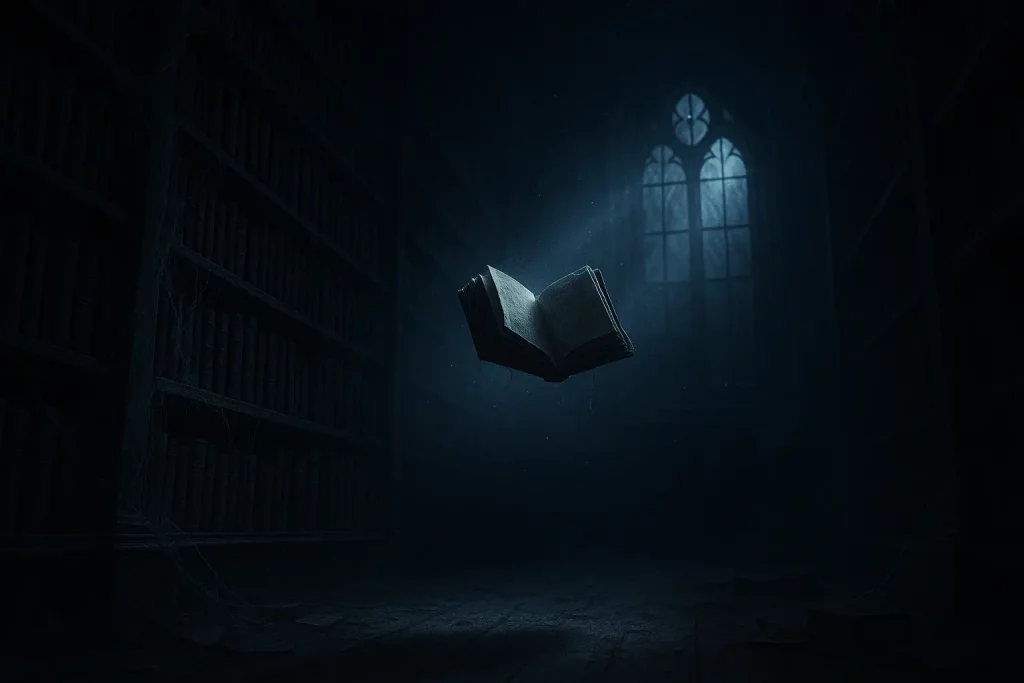
6. Arctic Expedition
Generate a cinematic scene of an explorer’s small, brightly colored tent pitched precariously on a vast, windswept arctic ice floe under the ethereal glow of the Aurora Borealis. The mood is one of extreme isolation, resilience, and awe-inspiring natural beauty. The lighting comes from the dancing green and purple lights of the aurora overhead, casting a soft, otherworldly glow on the snow and ice. The color palette features vibrant aurora colors against the stark whites and deep blues of the arctic environment. Use a very wide composition to showcase the immense, empty landscape surrounding the tiny camp. Include details like wind-blown snow patterns, sharp ice textures, and maybe faint stars visible beyond the aurora.
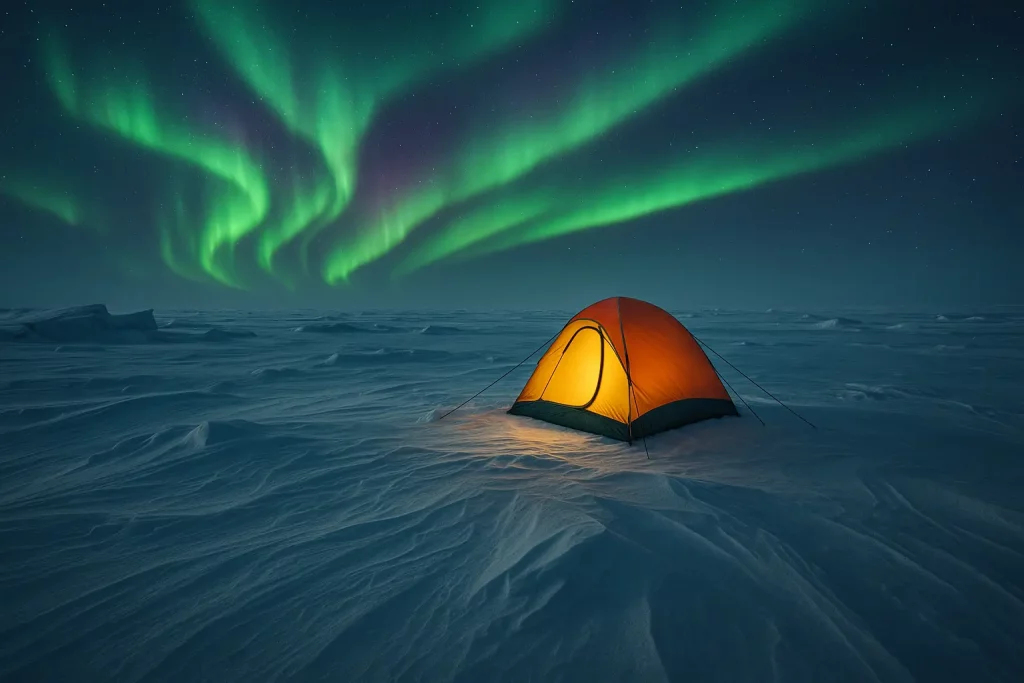
7. Post-Apocalyptic Scavenger
Capture a cinematic shot of a lone survivor scavenging supplies inside a dilapidated, overgrown supermarket. Sunlight streams through holes in the collapsed roof, illuminating dust-filled aisles. The mood is somber, resilient, and desolate. The lighting is characterized by strong beams of dusty sunlight cutting through the gloom, creating high contrast. The color palette is muted and desaturated – grays, browns, faded greens from encroaching nature, punctuated by the bright sunbeams. Use an eye-level composition, framed by overturned shopping carts or crumbling shelves. A shallow depth of field focuses on the survivor, blurring the decaying environment. Include details like scattered debris, rusted cans, and vines climbing over shelves.
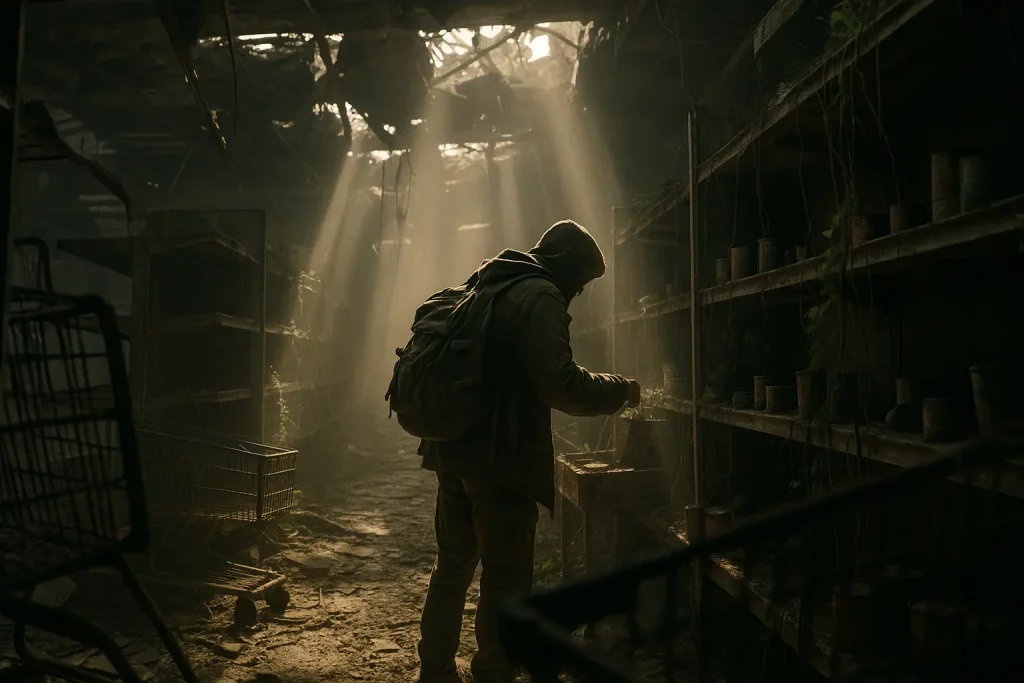
8. Royal Twilight
Depict a cinematic scene of a princess (or prince) in elegant attire standing on a stone balcony of a majestic, fantastical castle at twilight, overlooking a valley shrouded in mist. The mood is romantic, slightly melancholic, and filled with longing. The lighting is soft twilight, with the fading warm colors of sunset on the horizon transitioning to the cool blues of approaching night. Faint lights might glow from the castle windows. The color palette blends soft pinks/oranges with deepening blues/purples. Use a medium shot, slightly from behind, capturing both the figure and the expansive view. Include details like intricate stonework, climbing roses on the balcony, and the swirling mist below.
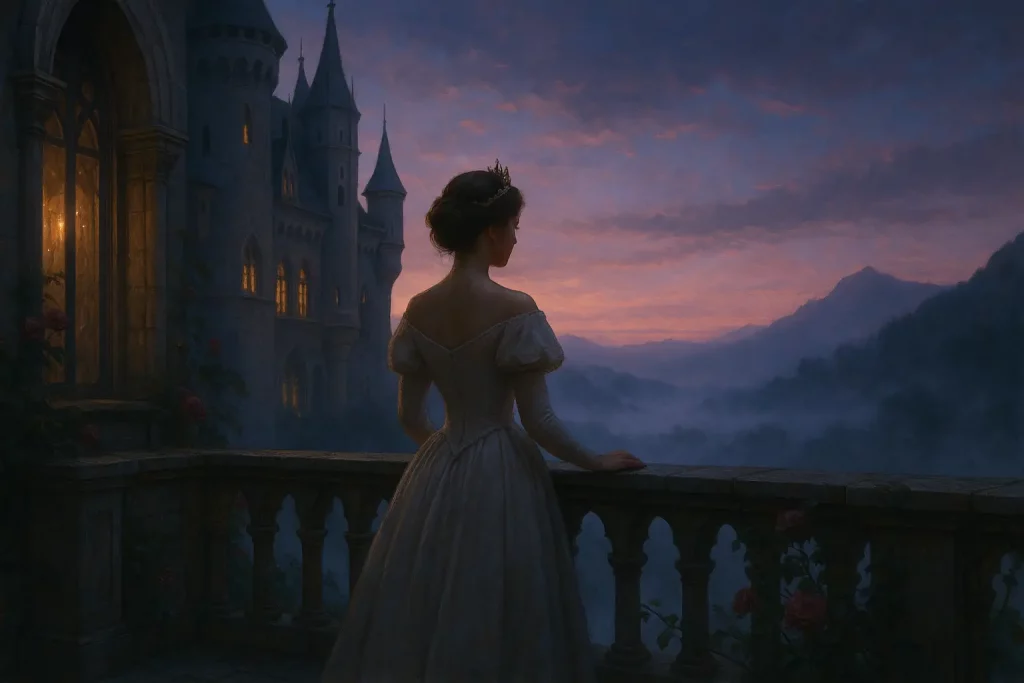
9. Jazz Soloist
Generate a cinematic image capturing the intense focus of a trumpeter performing a solo on a dimly lit stage in a smoky jazz club. The mood is passionate, intimate, and soulful. The lighting is a single, warm spotlight hitting the musician, causing highlights on the instrument and casting the background into deep shadow. The color palette is warm – golds, ambers, deep reds, and browns – contrasted with near blacks. Use a close-up composition focusing on the musician’s face and instrument, possibly with a slight low angle. A very shallow depth of field isolates the subject. Include details like beads of sweat, smoke curling in the spotlight beam, and reflections on the polished brass.
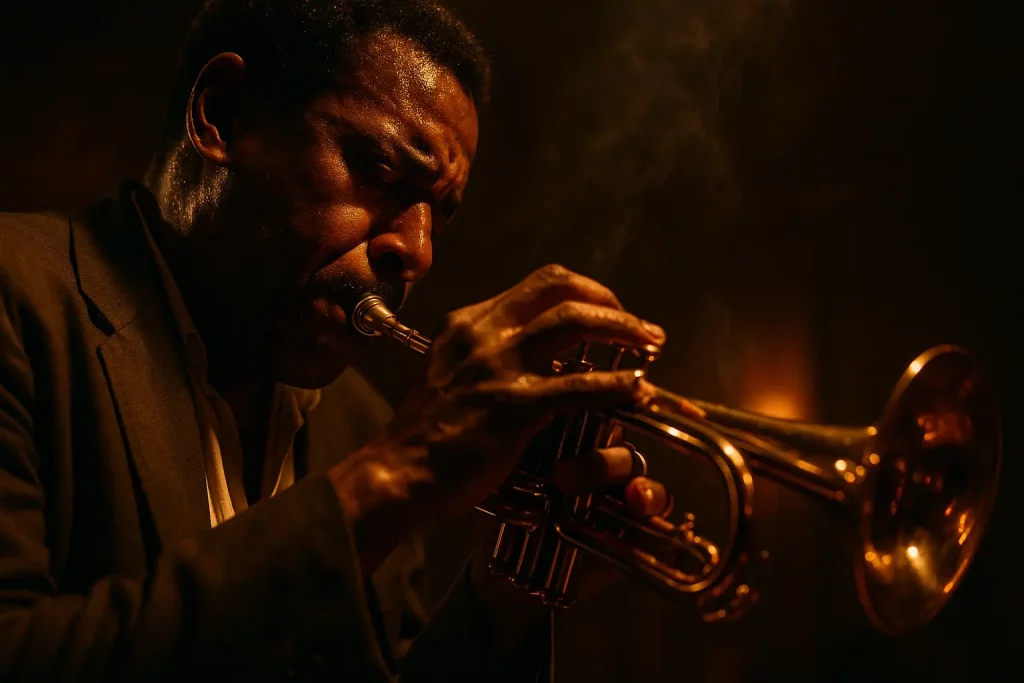
10. Himalayan Monks
Create a cinematic shot of monks in saffron robes walking in single file along a narrow, windswept path leading to a remote monastery perched high on a cliff face in the Himalayas. The mood is serene, spiritual, and majestic. The lighting is crisp, clear mountain air, possibly early morning with soft, diffused light and long shadows. The color palette features the vibrant saffron robes against the grays and whites of the rock and snow, with a deep blue sky. Use a telephoto lens effect (compressed perspective) composition from a distance, emphasizing the precarious path and the grandeur of the setting. Include details like prayer flags fluttering in the wind and distant snow-capped peaks.
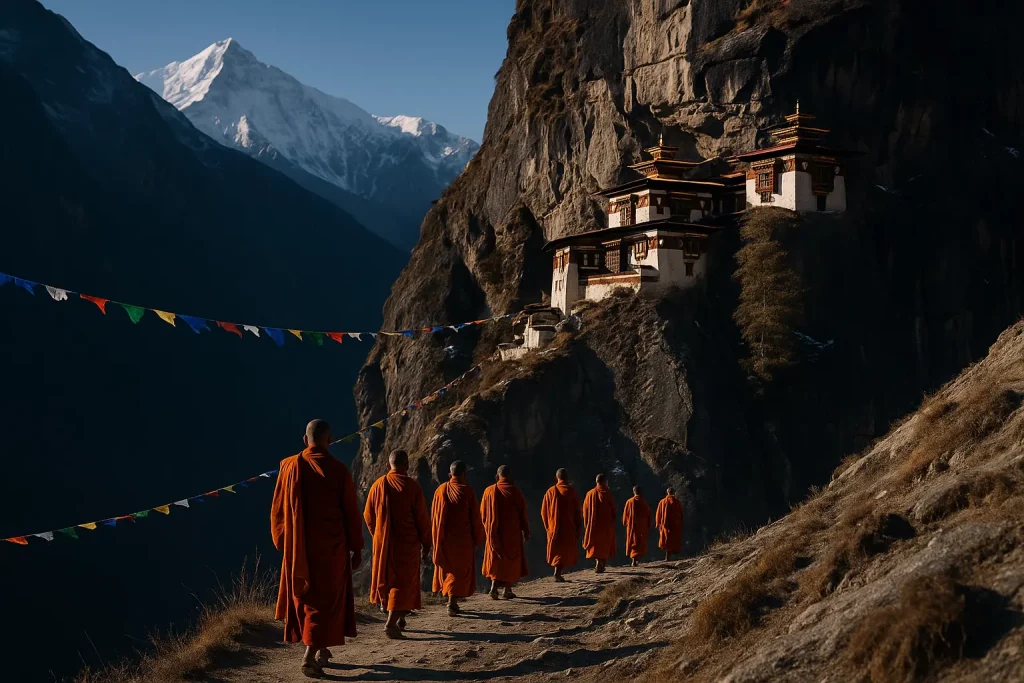
11. Carnival Night
Capture a cinematic scene of a lone child holding a single red balloon, looking up in wonder at a brightly lit, slightly eerie Ferris wheel at a deserted carnival ground late at night. The mood is nostalgic, slightly unsettling, and dreamlike. The lighting is dominated by the multi-colored lights of the Ferris wheel and other distant rides, casting a colorful glow on the child and the surrounding empty stalls. The color palette is vibrant but set against a dark, almost black sky, creating high contrast. Use a low-angle composition looking up from the child’s perspective. A shallow depth of field keeps the child and balloon sharp, blurring the background lights into bokeh. Include details like scattered popcorn, shadows of empty rides, and a hint of fog.
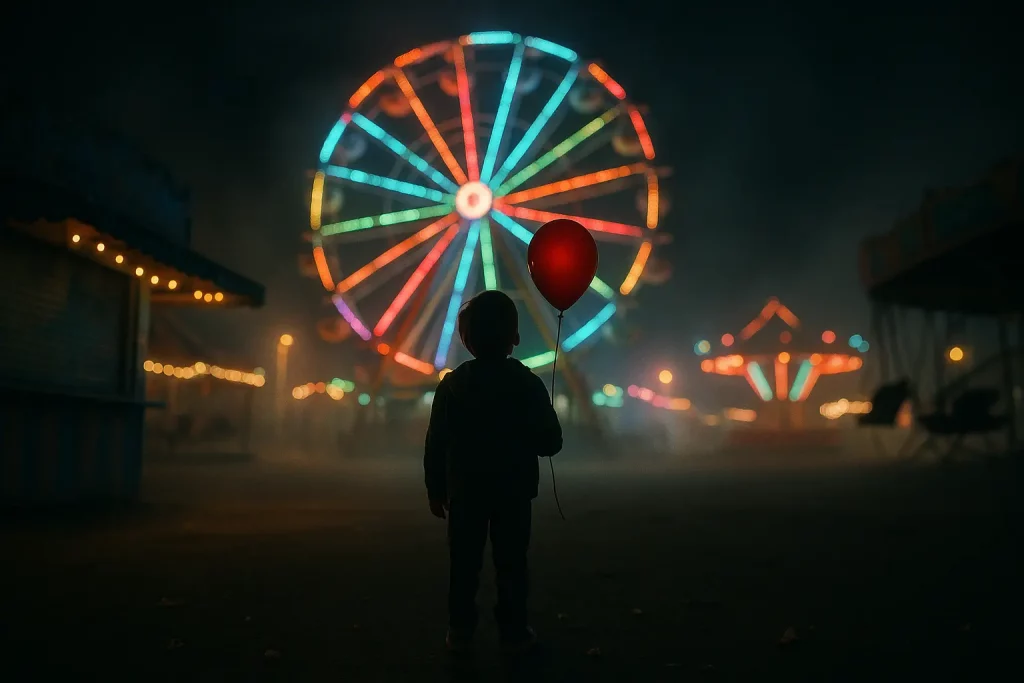
12. WWII Bunker
Generate a cinematic image inside a cramped, dimly lit concrete bunker during WWII. A weary soldier sits hunched over a map laid out on a crate, illuminated only by a flickering oil lamp. The mood is tense, claustrophobic, and uncertain. The lighting is minimal and warm from the single lamp, creating harsh shadows and highlighting the texture of the concrete walls. The color palette is muted – grays, olive drab green, warm yellow/orange from the lamp. Use a tight, medium close-up composition, emphasizing the confined space. Include details like condensation on the walls, discarded ration tins, radio equipment in the background, and the soldier’s fatigued expression.

13. Misty Lake Dawn
Create a cinematic shot of an old wooden rowboat drifting gently on a perfectly still lake shrouded in early morning mist. The sun is just beginning to rise, casting a soft, warm glow. The mood is peaceful, serene, and tranquil. The lighting is soft, diffused, and warm, with the sun’s glow filtering through the mist. The color palette features soft pastels – pale blues, pinks, golds, and muted greens from the distant shoreline barely visible through the mist. Use an eye-level, wide composition, emphasizing the stillness and reflections on the water. Include details like ripples where the boat has drifted, mist clinging to the water’s surface, and perhaps a lone bird flying overhead.
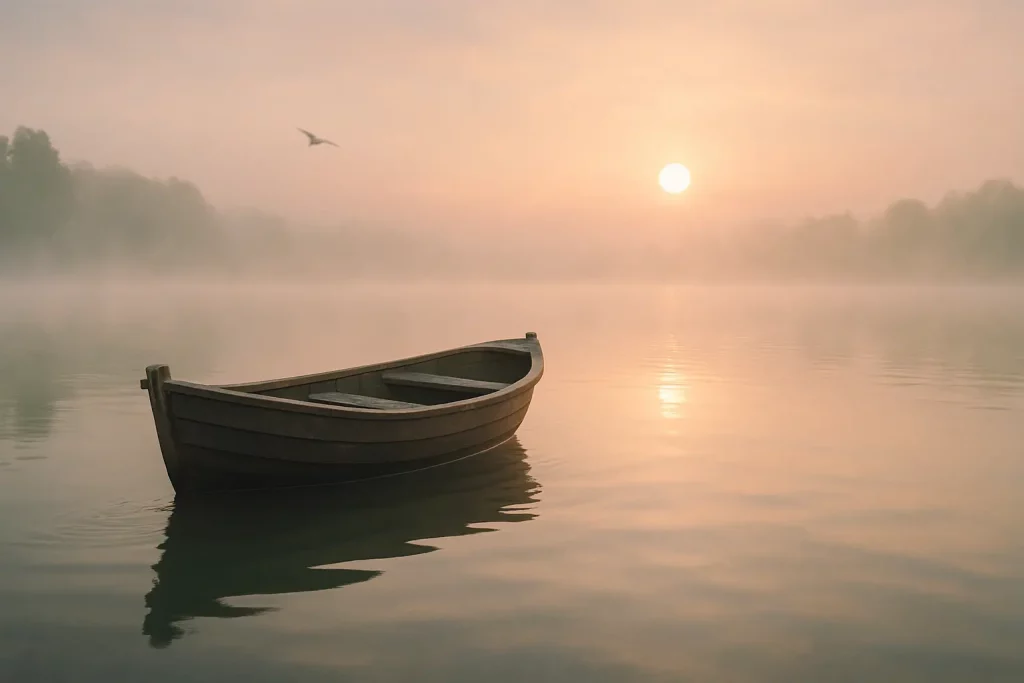
14. Rainy Bus Stop
Depict a cinematic scene of a lone figure waiting at a glass bus stop shelter on a rainy urban night. The figure’s reflection is visible in the wet glass, distorted by raindrops. Streetlights and car headlights create colorful bokeh in the background. The mood is melancholic, patient, and anonymous. The lighting is ambient from streetlights and passing cars, reflecting off wet surfaces and illuminating the rain streaks on the shelter glass. The color palette is cool blues and grays, punctuated by streaks of warm yellow, red, and white lights. Use an eye-level composition, shooting through the rain-streaked glass. Focus is on the figure, with the background lights beautifully blurred. Include details like condensation inside the shelter, reflections on the wet pavement, and the blur of passing traffic.
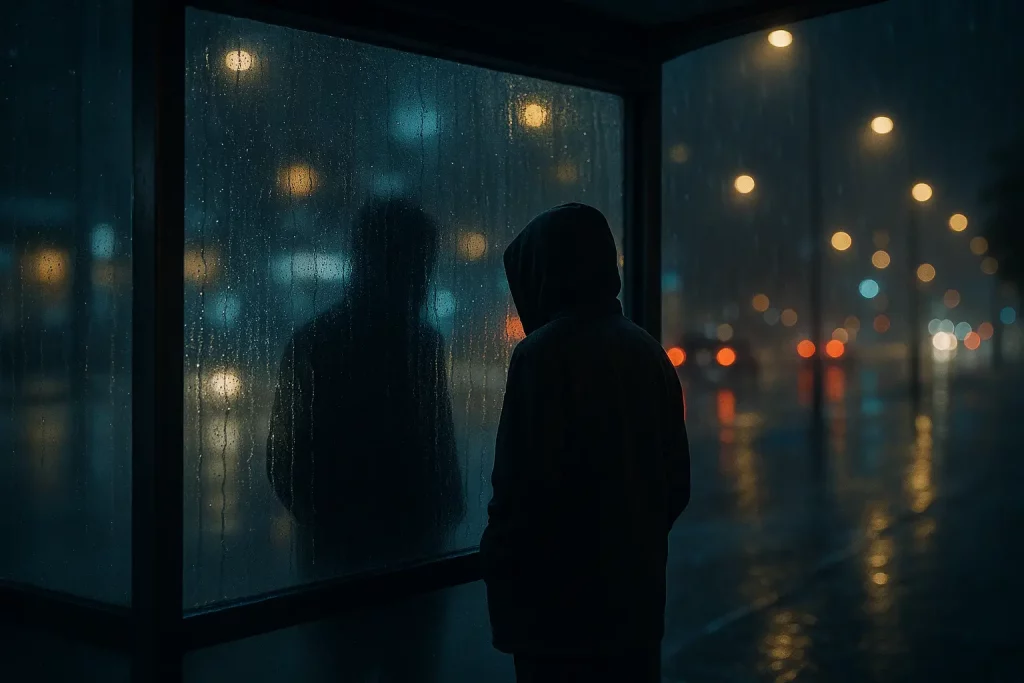
15. Future Racer
Capture a cinematic action shot of a sleek, futuristic vehicle speeding through a neon-lit tunnel, leaving light trails behind it. The perspective is low and close to the ground, emphasizing speed. The mood is high-energy, dynamic, and futuristic. The lighting is artificial and dynamic, coming from the tunnel’s neon strips and the vehicle’s own lights, creating motion blur and reflections on the tunnel walls. The color palette is electric blues, purples, and whites, with sharp highlights. Use a wide-angle, low-to-the-ground composition with motion blur conveying immense speed. The vehicle is the sharpest element. Include details like reflective tunnel surfaces, complex light patterns, and perhaps sparks or energy discharge from the vehicle.
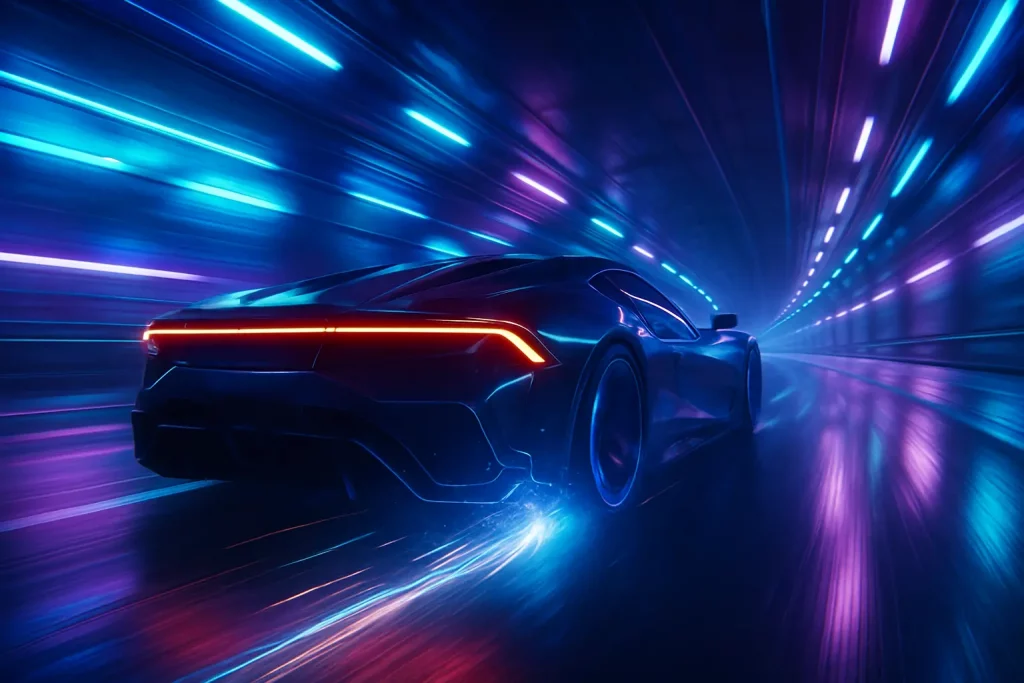
16. High Noon Standoff
Capture a cinematic frame of a lone gunslinger standing defiantly in the middle of a dusty, sun-baked Western town main street at high noon. Tumbleweeds roll past. The mood is tense, expectant, and iconic. Lighting is harsh overhead sunlight, creating stark, short shadows and bleached-out highlights on the wooden storefronts. The color palette features dusty browns, pale yellows, and washed-out blues of the sky. Use a wide-angle, low-composition shot, emphasizing the emptiness of the street and the isolated figure. Shallow depth of field keeps the gunslinger sharp against a slightly blurred background. Add details like heat haze, dust kicking up, and the glint of sun on a spur.
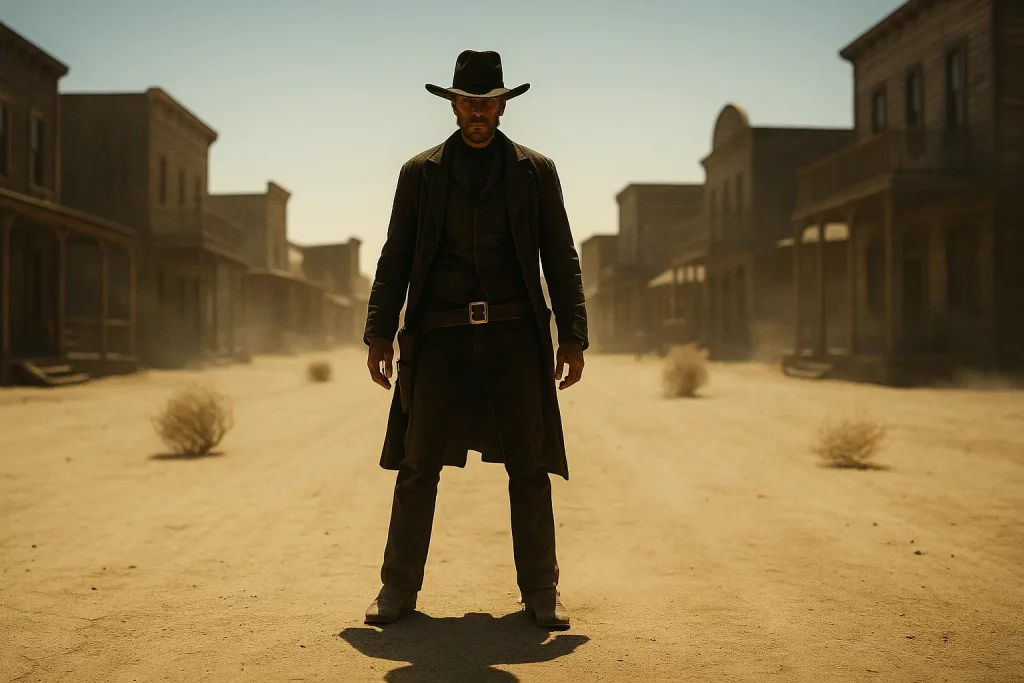
17. Industrial Revolution
Capture a cinematic scene on a noisy, busy factory floor from the early 20th century. Workers operate large, complex machinery amidst sparks, steam, and shadows. The mood is industrial, gritty, and dynamic. Lighting is dramatic, with shafts of light from high windows cutting through the dusty air, supplemented by harsh point lighting from lamps near machinery, creating areas of bright intensity and deep shadow. The color palette is dominated by metallic grays, oily blacks, rusty browns, and the bright orange/yellow of sparks or molten metal. Use a composition that incorporates strong diagonal lines from machinery and light beams, capturing the sense of organized chaos. Add details like sweat on workers’ brows, piles of raw materials or finished goods, and motion blur from moving parts.
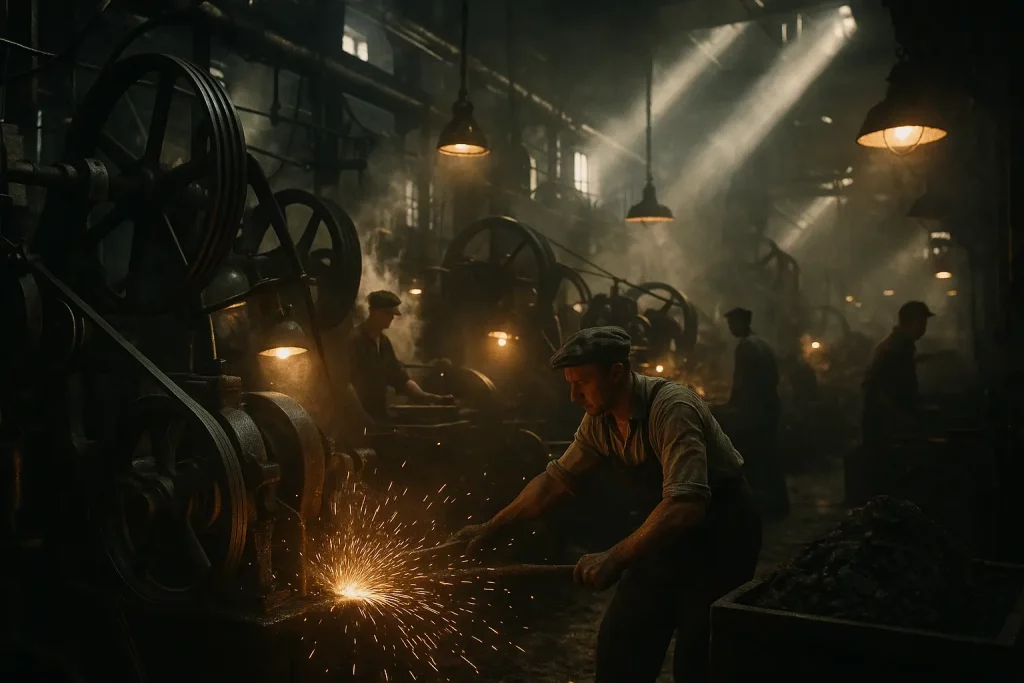
18. Volcano Researcher
Create a cinematic shot of a geologist in a heat-resistant suit standing cautiously near the edge of a flowing lava stream on a stark volcanic landscape at twilight. Glowing lava illuminates the scene, contrasting with the cooling black rock and dark sky. The mood is dangerous, primal, and awe-inspiring. Lighting is dominated by the intense orange/red glow of the molten lava, casting dramatic light on the geologist and the surrounding rock formations. The color palette is stark – fiery reds, oranges, yellows, against deep blacks and grays. Use a medium-wide composition to show the geologist in relation to the lava flow and the barren environment. Include details like heat haze, steam rising where lava meets cooler rock, and the texture of solidified lava.
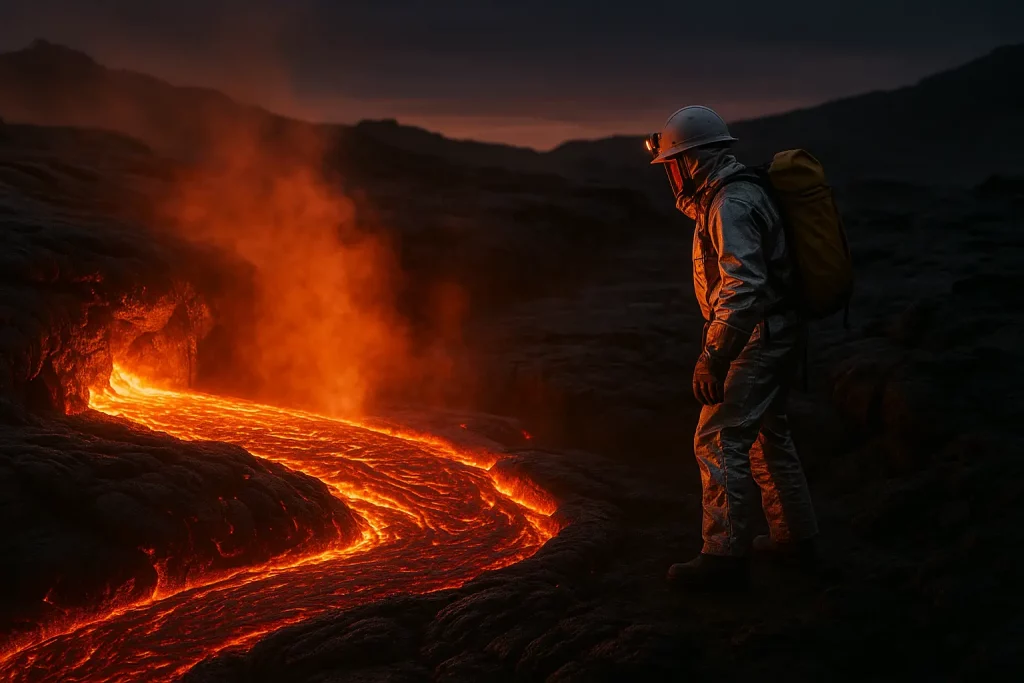
19. Train Station Farewell
Generate a cinematic image capturing an emotional farewell between two people on a misty train platform beside a steam train ready for departure. One person is leaning out the window, the other stands on the platform. Steam billows around them. The mood is poignant, romantic, and melancholic. Lighting is diffused and atmospheric due to the steam and mist, perhaps with warm light spilling from the train windows and cooler ambient light on the platform. The color palette features muted tones – grays, browns, deep reds or greens of the train – with the warm window light creating focal points. Use a medium close-up composition focusing on the faces and hands of the two figures, capturing the emotion. Include details like period clothing (e.g., 1940s), luggage carts, the texture of the wet platform, and swirling steam.
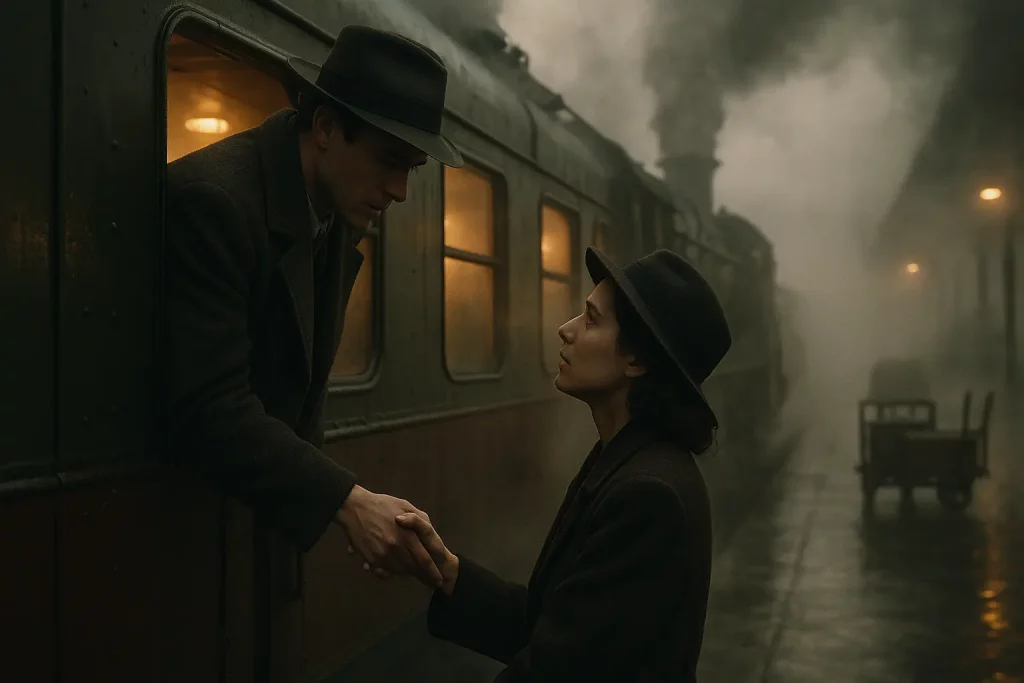
20. Sunset Surfer
Capture a cinematic frame of a lone surfer carrying their board, walking out of the ocean onto a sandy beach as the sun sets dramatically over the water. Waves gently lap the shore. The mood is peaceful, contemplative, and captures a sense of freedom. Lighting is the warm, vibrant glow of the setting sun, backlighting the surfer’s silhouette and casting golden reflections on the wet sand and water. The color palette is rich with oranges, pinks, purples, and golds in the sky and reflections, contrasted by the dark silhouette. Use a wide, eye-level composition, placing the surfer off-center, allowing the sunset and ocean to dominate the frame. Include details like footprints in the wet sand, sea foam, and lens flare from the setting sun.
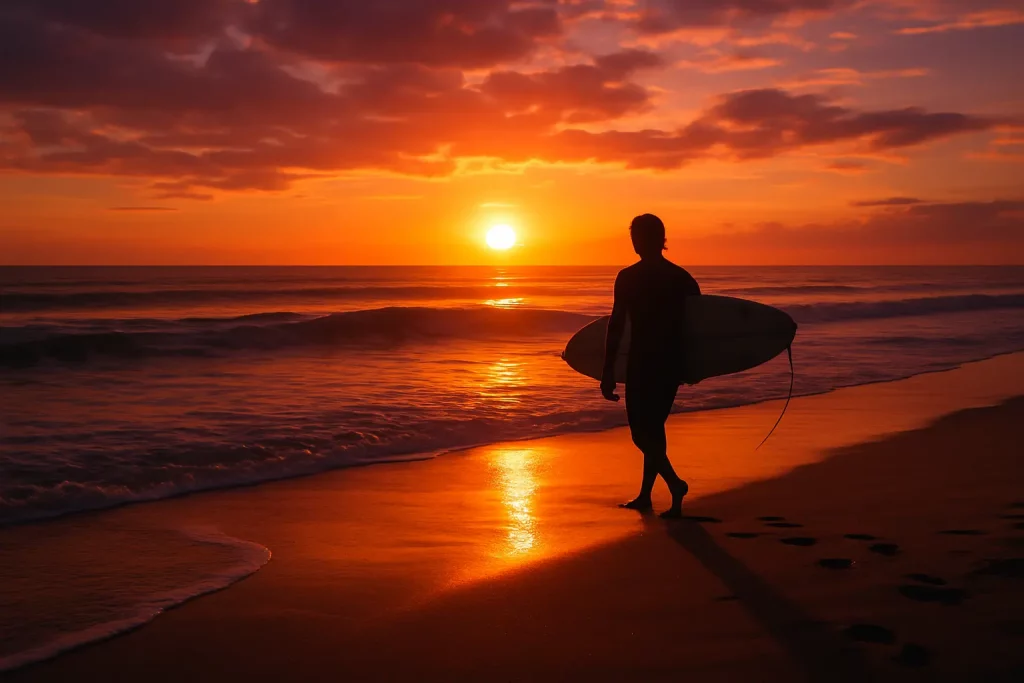
These prompts should give you a solid starting point for creating gorgeous cinematic photos. The key is being specific about what you want while giving ChatGPT enough creative freedom to fill in the gaps.
Try these prompts as written or modify them to match your vision. With a bit of practice, you’ll soon be creating stunning cinematic images that tell powerful visual stories.
